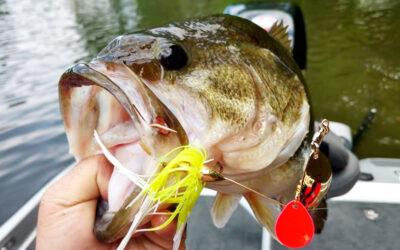We sit down with Bo Merckle of SamsSon Lures to discuss his unique idea for the ultimate memorializing bass fishing lure of your loved one.
The Science Behind Bass
Bass fishing is an intricate sport that intertwines the biology of the fish, the physics of their environment, and the techniques used by the angler. Understanding the science behind bass and how it relates to fishing can significantly improve your success and enjoyment of the sport.
At the heart of this is understanding the biology of bass. Bass are a predatory fish species, with a highly developed lateral line system that allows them to detect pressure and vibration in their environment, including low-frequency sounds, or bass. This system acts as a kind of sonar, helping them locate prey and avoid predators. It’s also what makes them so good at finding and striking at fishing lures.
Bass are also ectothermic, meaning their body temperature and metabolism are directly influenced by the temperature of their environment. As the water temperature changes with the seasons, so does the behavior of the bass. They tend to be more active and feed more aggressively in warmer waters, while in colder waters, their metabolism slows down and they become less active.
Understanding the physics of the water environment is also key. Water has different properties than air: it’s denser, conducts sound better, and refracts light differently. These factors can affect how well bass can see and hear, and thus, how they respond to lures. In clear water, bass rely more on sight and may be more likely to be attracted to brightly colored or flashy lures. In murky water, they rely more on their lateral line system and may respond better to lures that vibrate or make noise.
In terms of angling techniques, the science behind bass and their behaviors can inform strategies for success. Using lures that mimic the movement, vibration, and color of a bass’s natural prey can increase the chance of a bite. Casting in areas where bass are likely to be hiding or hunting (like under overhangs or around structures) can also increase your odds. Similarly, adjusting your fishing strategy based on the water temperature can help you find bass when they’re most active.
Additionally, factors like barometric pressure and lunar cycles have been studied for their potential impact on bass feeding behavior. Some research suggests that bass are more active during certain moon phases or when the barometric pressure is falling, although the exact mechanisms behind these behaviors are still not entirely understood.
In conclusion, the science behind bass – their biology, the physics of their environment, and the techniques used by the angler – all intertwine to create the sport of bass fishing. Understanding these factors can help anglers make more informed decisions and ultimately have a more successful and enjoyable fishing experience.

Do Bass See at Night?
In short, the answer is YES, Bass do see at night! They actually have excellent vision at night due to having much denser sets of light gathering rods than we do, but they do not only use their superior vision to track their next meal. They also rely on other senses...








